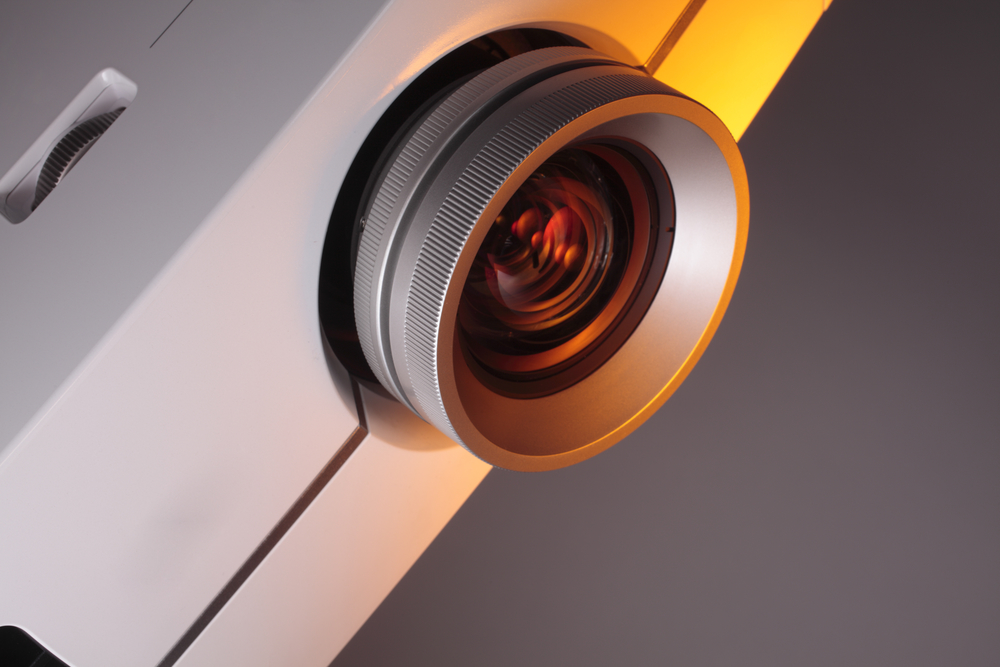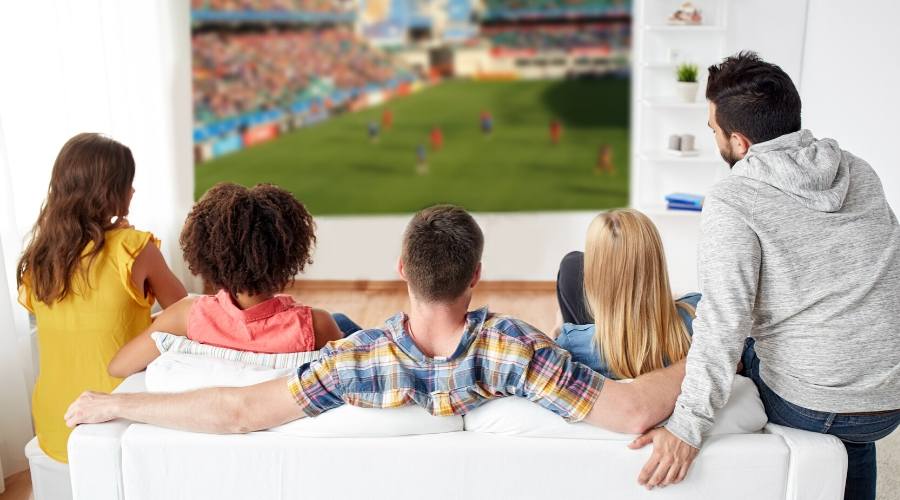While a big TV can be enough for home entertainment systems setup, opting for a home projector with a massive display screen can elevate your home movie experience to new heights.
Did you know that projectors were invented more than a century ago? However, they were only used for commercial and business applications.

With the advancement in home entertainment, a home projector is quickly substituting big screen televisions in the home theater setup.
In addition, a home projector is becoming more and more inexpensive for the average person. As a matter of fact, you can set up a good home entertainment system no matter what your budget is. And for under $1000 you can have a top-quality system for your home.
When purchasing a projector for your home entertainment setup, you will see a vast range of products.
From image quality to technical specifications, you will have to look at several factors before deciding what projector to get. It may get to be daunting; thus, we’ve prepared this handy guide to help you select the right home theater projector for your home theater setup.
Projection Technology
Apart from the sound, the visual display is the other half of a complete home movie theater setup. Therefore, it’s essential to learn the different varieties of technical specifications before you pick a home theater projector.
The two types of projectors are the Digital Light Processing (DLP) and Liquid Crystal Display (LCD). As always, each class has its own benefits and drawbacks – depending on your personal needs and specifications.
DLP projectors make use of mirrors to generate images. The advantages of using a DLP projector includes producing a smooth image with no shadows, having a higher contrast ratio, and saving on cost as they are the most inexpensive home theater projectors on the market.
 However, the drawbacks of DLP projectors include producing a rainbow effect across the screen display, not being as bright as their LCD counterpart, and not having enough number of pixels.
However, the drawbacks of DLP projectors include producing a rainbow effect across the screen display, not being as bright as their LCD counterpart, and not having enough number of pixels.
On the other hand, LCD projectors utilize three LCD chips that are specially designed to project images on an external screen. LCD projectors have three variants: DIgital Imaging Light Amplification (D-ILA), Liquid Crystal Silicon (LCOS), and Silicon Crystal Reflective Display (SXRD).
The advantages of this type of projector include having higher brightness capacities and excellent color saturation and their compactness. The disadvantages include the possibility of having dead pixels, losing image quality gradually, and having lower color uniformity compared to their DLP counterpart. Also, LCD projectors are generally more expensive than DLP projectors.
Aspect Ratio
This item refers to the rectangular shape of the display image or the viewing space. 4:3 ratio and the 16:9 ratio are the two basic aspect ratio types. A non-high definition TV has a 4:3 aspect ratio. An HD TV, on the other hand, has a 16:9 aspect ratio.
The 16:9 aspect ratio is rapidly replacing this aspect ratio. It’s also the most widely used aspect ratio format in gaming and television due to its high definition capacity and performance that works well with home entertainment systems.
Throw Distance
The distance between the home theater projector lens and the display screen divided by the screen’s width is called the throw distance. Check the product specification of the projector to see its throw ratio.
For example, if your home projector has a throw ratio of 3 and the screen is 5 feet, the distance of the projector from the screen to get an optimized viewing experience should be 15 feet.
Brightness
Typically, the brightness of a home projector should be between 800 and 3,000 lumens. However, certain factors affect the needed projector brightness and luminosity. These factors include the size of the screen and the ambient room light.
Bigger screens require more lumens to keep up with the quality of image needed. On the other hand, home theater projectors with lower lumen levels are more ideal in dark rooms.
If your home media or home theater room is dimly lit with an average-sized screen, you will need about 1,000 to 2,000 lumens. 2,000 to 3,000 lumens work well in most home entertainment systems and is the best option for home media rooms with stable ambient lighting.

I’m a home theater designer and installer in Atlanta, GA. I do professional photography shootings on the side. Blessed to be married to my sweet Margret. We adore our four sons. A book called “Fair Game” by Valerie Plame Wilson influenced me greatly when I read it years ago. I became a big fan of her books. When I saw that this domain name was available, I grabbed it! When I set out to do a blog on home theater I decided to use it rather than letting it go to waste.



